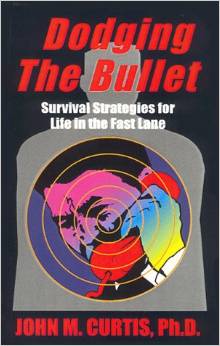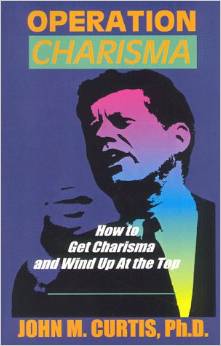With Pfizer and Moderna’s Covid-19 vaccines completed Phase III clinical trials, the two-dose vaccine product is ready for market requiring transportation at minus 94-degrees Fahrenheit, a staggeringly low temperature to preserve the vaccine’s efficacy. Why Pfizer’s technology required transportation at those extremely low temperatures is anyone’s guess. Pfizer and Moderna applied for FDA’s Emergency Use Authorization [EUA] with the FDA, something expected soon. Pfizer has been airlifting its Covid vaccine on chartered United Airlines flights from its manufacturing hub in Puurs, Belgium. Airlifting the vaccines in dry ice presents problems for airlines because its considered a hazardous material, giving off carbon dioxide when it evaporates from solid to gas, sending plumes of deadly gas into the airliners, reducing oxygen to potentially dangerous levels.
Unlike Pfizer’s vaccine, Moderna’s requires refrigeration but not at the subzero temperatures required to transport the Pfizer vaccine. Both vaccines require two does but Moderna’s vaccine doesn’t require transportation as subzero temperatures. Wall Street has responded like gangbusters to the completed vaccines, rallying on major indexes to the highest levels in U.S. history. Wall Street gets out ahead of the curve when it comes to economic recovery, something the Federal Reserve Board doesn’t see happening for another two years. Shutting down businesses around the country, driving up the unemployment rate from 3.5% to over 12% plunged the U.S. economy into recession, with economic recovery somewhere in a murky future. Everyone wants the economy to rebound but most economists see recovery in fits-and-starts, not the V-shaped recovery predicted by 74-year-old President Donald Trump.
When it comes to the vaccines, Americans owe Trump a vote of gratitude for launching White House Operation Warp Speed to bring vaccines to market in record time. Trump was slammed by Democrats and President-elect Joe Biden for exaggerating the pace at which vaccines could make it to market. Biden said in the last presidential debate in Nashville, Tn., Oct. 22 that Trump grossly exaggerated the vaccine delivery, saying it wouldn’t happen until next summer. Turns out Trump was right that the vaccines should be rolling out for the first in line before year’s end. Biden and Harris liked to tell voters that you couldn’t trust any vaccine developed under Trump Operation War Speed. Once Biden won the Nov. 3 election, he was all in on the vaccines from Pfizer and Moderna making their way to market. Both two-dose vaccines have about 95% effectiveness.
Reports of Pfizer’s vaccine in Phase III trials indicates some adverse side effects, including fever, chills, muscle aches, exhaustion, headaches, all lasting between 24-48 hours depending on the person. If administered to first responders in Emergency Rooms, hospitals or transportation services, its possible employees won’t be fit to work for several days, requiring Human Resources to deal with potential interruption in hospital personnel. Regardless of the side effects, it’s going to take time to overcome fears that patients have about the vaccine’s safety-and-efficacy. USA Today’s Sept . 4 polls showed that only one-third of voters would take the vaccine, in part due to negative remarks by Biden and Harris. Hopefully that poll result will change as there’s more favorable information released from the FDA and Centers for Disease Control [CDC] confirming the vaccine’s safety profile.
Getting the vaccine to market won’t be easy for Pfizer that requires transportation at minus 94 degrees Fahrenheit. Each shipping container of vaccine requires about 20 pounds of dry ice, creating dangerous vapors in an enclosed environment like an airplane cargo bay. Cargo planes can only carry so much dry ice, considered a hazardous material, capable of reducing oxygen levels to toxic conditions. “The FAA [Federal Aviation Administration] is working with manufacturers, air carriers and airport authorities to provide guidance on implementing the current regulatory requirements for safely transporting large quantities of dry ice in air cargo,” said the FAA statement. Pfizer didn’t think about the logistical nightmare of trying to deliver large quantities of vaccines with so much dry ice. Moderna doesn’t have the same logistical problem, more likely to get product to market.
When it comes to Pfizer’s vaccine, the logistical requirement of transporting Covid vaccine at minus 94 degrees Fahrenheit could present delivery problems in the near future. While first responders, medical and nursing personnel are expected to get vaccines first, hospitals, clinics and laboratories could have personnel problems as negative side effects kick in preventing employees from going to work. Distributed out of Pleasant Prairie, Minn,, Pfizer hopes to keep shipments coming 24/7, a welcome relief to United Airlines needing work for its flight attendants and baggage handlers in the Covid age. United Airlines doesn’t care how it flights are filled, whether with Covid vaccine, business or recreational passengers. “The FAA is ensuring around-the-clock air traffic to keep the cargo moving and prioritizing flings carrying cargo, such as vaccines, and personnel . . .” said the FAA statement.



